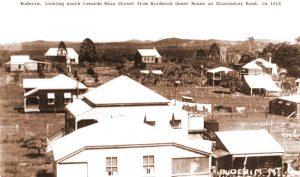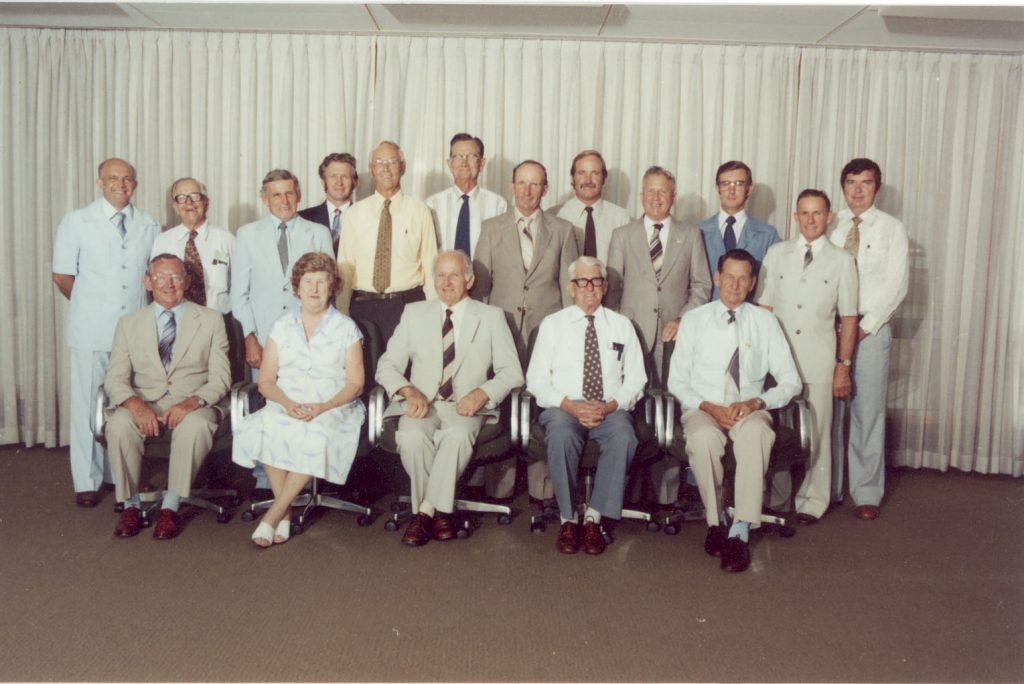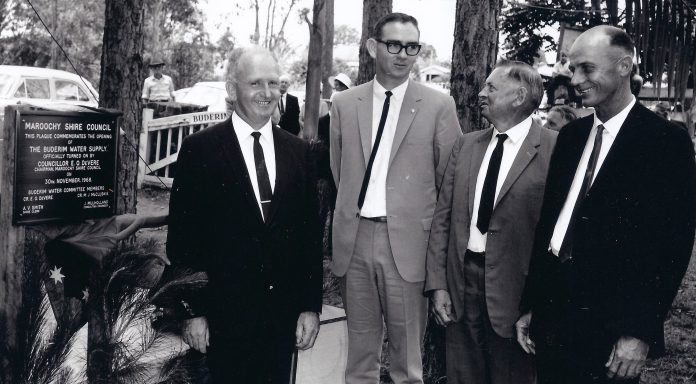In 2021, it’s hard to imagine homes in Buderim with backyard dunnies or a septic tank sitting amid landscaped gardens, but less than 40 years ago, sewerage was a smelly issue on the plateau.
The 1982 local government election spelt the end of the long Maroochy Shire Council reign of Eddie De Vere, who had been at the helm since 1967, and the local councillor for Kenilworth since 1951.
He had successfully guided the shire through its first major growth pains, played a big part in getting tourism off the ground as an industry and was caught up in fierce local debate about the desirability of high-rise development.
And yet, it was his passionate belief that Buderim should be connected to the sewerage system that led to his political demise at the 1982 local government election.
It was ironic that the issue which led to his downfall was the same one that had previously scored him untold points.

Water and sewerage systems had been a priority for De Vere since his election as the councillor for Kenilworth. Its reticulated water supply was the first on the Sunshine Coast when it was turned on in 1957, and its sewerage scheme opened in 1963.
Buderim’s water supply was opened in 1968, and by the early 1980s, De Vere had overseen construction of sewerage systems for most of Maroochy Shire’s major centres – Buderim being the exception.
In those days, the State Government would assist with funding on such projects, as it was a means of generating employment.
Having previously completed other sewerage projects around the shire with dollar for dollar State subsidies, De Vere was keen to keep going while money was available.
Love nostalgia? So do we. Help keep more great Coast memories alive by subscribing to our free daily news feed. Go to Subscribe at the top of this story and add your name and email. It’s that simple.
He feared that the subsidy was about to be cut from 50 per cent to 30 per cent which, in a project amounting to millions of dollars, was the difference between it going ahead and becoming unaffordable.
The problem was, that it also meant that rates would go up in Buderim to cover a levy for the new sewerage scheme.
A survey was sent to all ratepayers, who were invited to tick the box if they were in favour. An easy majority of 76 per cent voted in favour of going ahead with sewerage – but the exercise of contacting all the residents of Buderim cost nine months.
With time running out on the available subsidy, De Vere pushed ahead quickly to get work underway.

The major trunk mains went in first to maximise the subsidy and half of the overall cost – a large section of Buderim – was sewered on maximum subsidy. When the subsidy was dropped, De Vere had to plough on with the job that had been started.
With the 1982 election in sight, the job was well underway and the project was past the point of no return.
But debate continued to rage that Buderim rates were too high and the people could not afford to pay more for sewerage.
It was reported in October 1981, that State Government cutbacks in local authority subsidies had forced Maroochy Shire Council to abandon a Yandina sewerage scheme and to freeze Buderim’s pending a review.
Despite the reports that the council had suffered a $6 million loss, this amounted to the very same water and sewerage subsidy cuts that De Vere had predicted would occur and the Yandina scheme was in fact due for commissioning.
Public opinion, stirred up by local newspaper reports, started running high against him and when headlines on election day in March 1982, were dedicated to the folly of a Buderim sewerage scheme, De Vere knew that his more than 31 years in public life were over, even before voters went to the polls.
He recalled later, “As soon as I saw the headlines I knew at once I didn’t stand a chance. I put the newspaper straight in the wastepaper basket.”
Eddie De Vere died at 86, in November 2000. Today, it is difficult to believe that a politician might lose his seat for wanting to install sewerage, and even harder to imagine Buderim without a sewerage system.
Do you have an opinion to share? Submit a Letter to the Editor at Sunshine Coast News via: news@sunshinecoastnews.com.au





